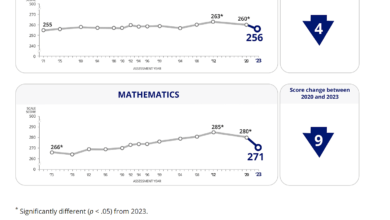School Resource Officers: Is Police Presence in Schools Doing More Harm than Good?

Kayla Susalla
In the 2019–20 school year – the most recent with federal data – 51.4 percent of public schools possessed an armed, sworn, law‐enforcement officer. School Resource Officers (SROs) are police officers with a community‐oriented approach intended to increase safety by mitigating crime, violence, and other anti‐social behavior in schools. Some Americans view added police presence as an appropriate response to safeguard students, while others fear an increase in police misconduct. There is also growing concern SROs accelerate the “school‐to‐prison pipeline”: pushing students into the criminal justice system through excessive discipline and law enforcement contact.
With important concerns both for and against SROs, policymakers must ask: Do they do more harm than good?
SROs are relatively new, and there are yawning gaps in research. Studies are often limited to small samples and find contradictory outcomes on arrest rates and effects on school safety. Nevertheless, a common theme is the presence of SROs increase disciplinary actions, including punishments potentially carrying significant long‐term harms.
Researchers Gottfredson, et al. compared schools with increased SRO presences to schools with no increase in SROs. They found that schools with increased SROs saw the number of drug and weapons‐related offenses rise, as well as higher instances of exclusionary discipline by school administrators. Exclusionary discipline refers to measures that remove students from school, such as out‐of‐school suspensions. The study also concluded the increase in SROs did not improve school safety.
Researchers Sorensen, Shen, and Bushway found the presence of SROs in middle schools decreased serious violence, in contrast to Gottfredson, et al., making schools safer, but they also increased “out‐of‐school suspensions, transfers, expulsions, and police referrals.” The increase in suspensions was especially acute for Hispanic and Black students. A third study, comparing schools near police departments that did and did not qualify for SRO grants, had similar results, finding schools near departments above the threshold increased the number of recorded firearm offenses and decreased the instances of violent fights, but increased expulsions, referrals for arrest, out‐of‐school and in‐school suspensions, and chronic absenteeism. Black students experienced the largest effect on out‐of‐school suspensions, over two times greater than white students, followed by students with disabilities and males.
Through exclusionary discipline, students miss the point of school – to be in the classroom learning – which can create lasting educational and socialization gaps. Additionally, the stigma surrounding the label of “criminal” can ostracize students from their social groups and remove support provided at school. But positive relationships are vital, particularly given the uptick of mental health disorders such as anxiety and depression among young Americans.
Another study, which compared schools with and without SROs in the same districts, found no effect on total arrests, but a 402.3 percent increase in the arrest rate for disorderly conduct. The null findings on total arrests suggest arresting students is not the most common form of correction by SROs, but the five‐fold increase in disorderly conduct bears consideration. Disorderly conduct is cited when someone “disrupts the peace” and it is among the most discretionary – and possibly minor – actions potentially resulting in charges. For example, a student abruptly shouting in class could be charged with a misdemeanor or civil infraction, or in severe circumstances, a felony. The charge could depend on several factors: the teacher’s tolerance of the disruption, the student’s prior relationship with the teacher or SRO, or occurrences of interruptions in prior classes. The circumstances surrounding filing charges against a student can be subjective, leaving criminal justice system involvement largely open to SRO choice.
Criminalization of misbehavior can inhibit future education, employment, and housing opportunities, feeding the “school‐to‐prison pipeline.” Additionally, narrowing of options may lead to a higher likelihood of recidivism, as students are deprived of opportunities that increase individual capital. Weisburst found that increased police presence in Texas schools led to a 2.5 percent decrease in high school graduation rates and about a 4 percent decrease in college enrollment rates.
An alternative to SROs could be encouraging administrators or parent monitors. Both groups could benefit from gaining greater awareness of school issues by engaging with the larger student body. Monitor positions create positive connections for youth by bridging social gaps between staff, parents, and students. Administrations can highlight mediation practices when conflict arises between students, and hold interventions with families, emphasizing law enforcement as a last resort. Such negotiation and conflict resolution are essential life skills.
States are rapidly expanding SRO programs, federal grants enable local agencies to create positions, and Congress continues to propose bills expanding such programs. Given the paucity of good research and the mixed findings of what does exist, expanding SROs is something all levels of government—especially Washington, which has no constitutional authority to intervene—should be hesitant to do.





